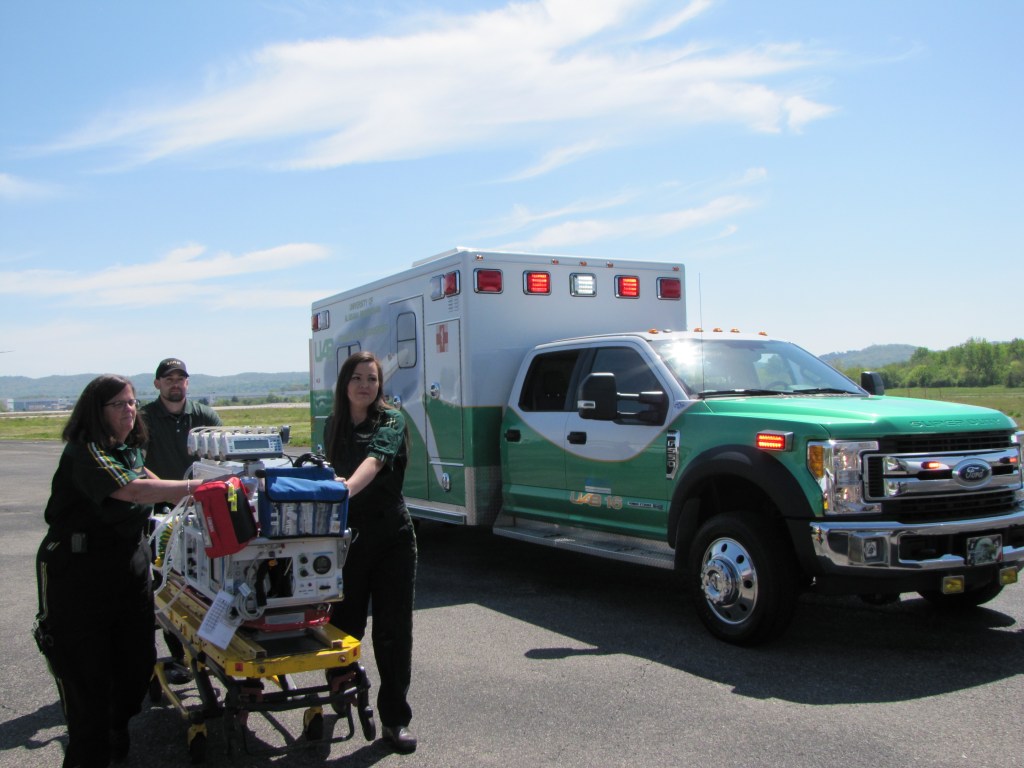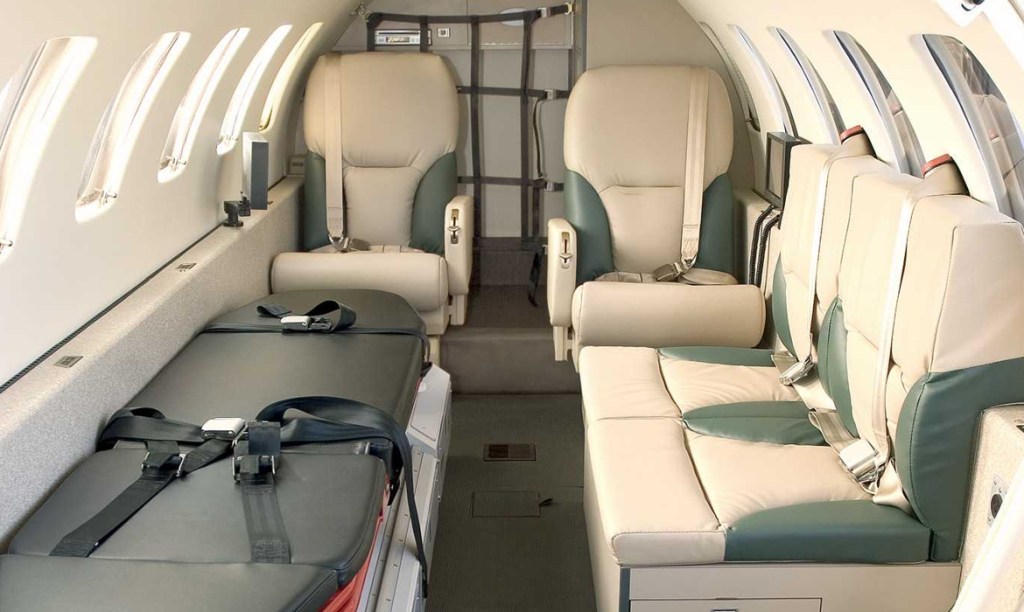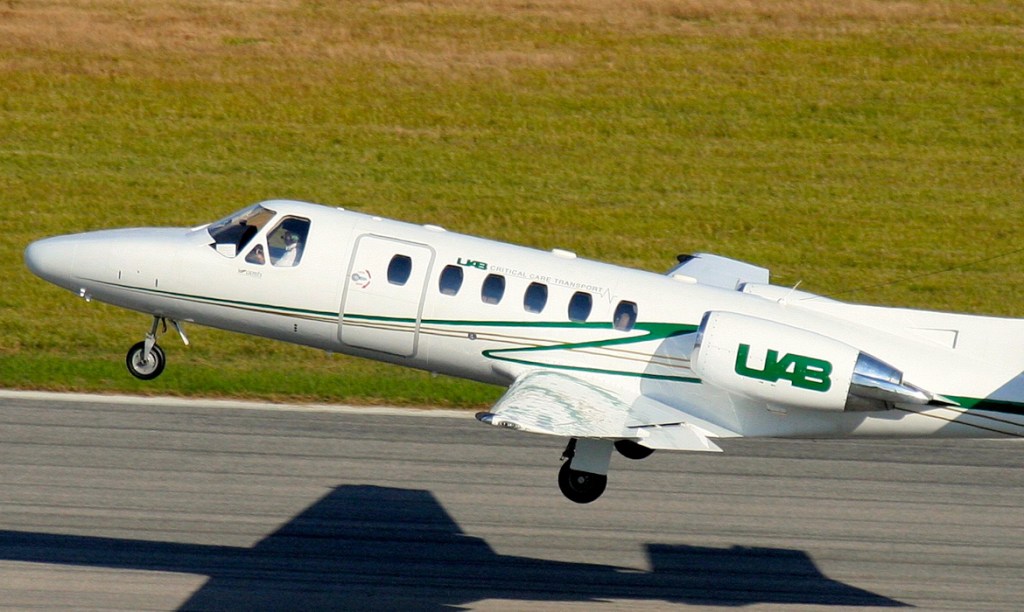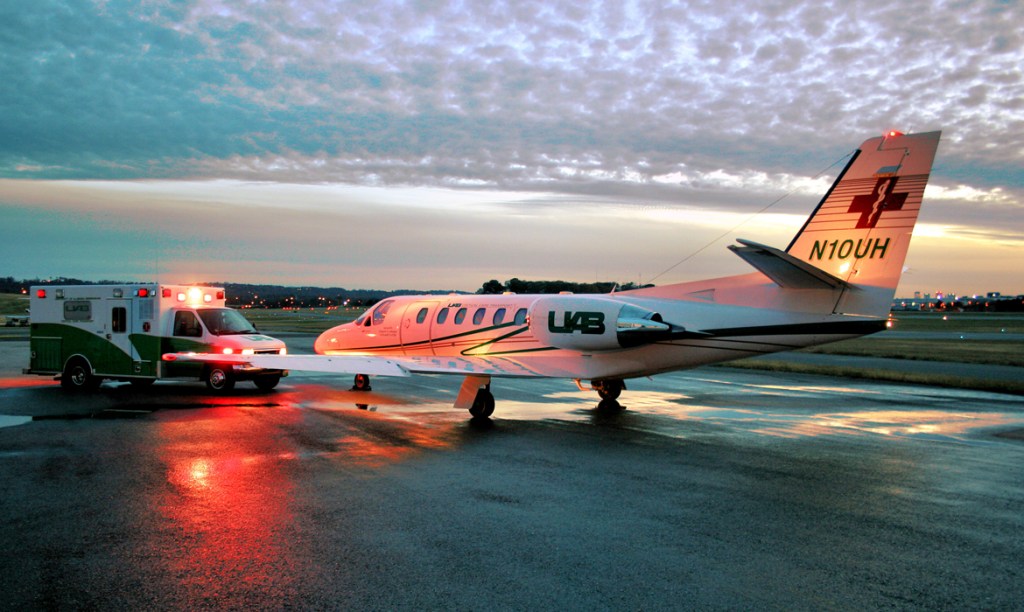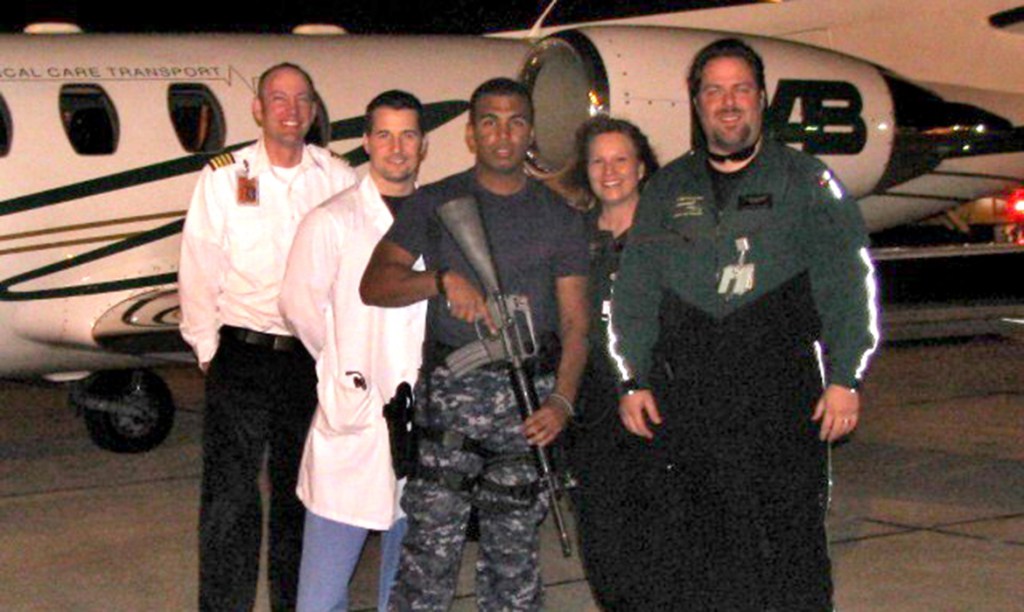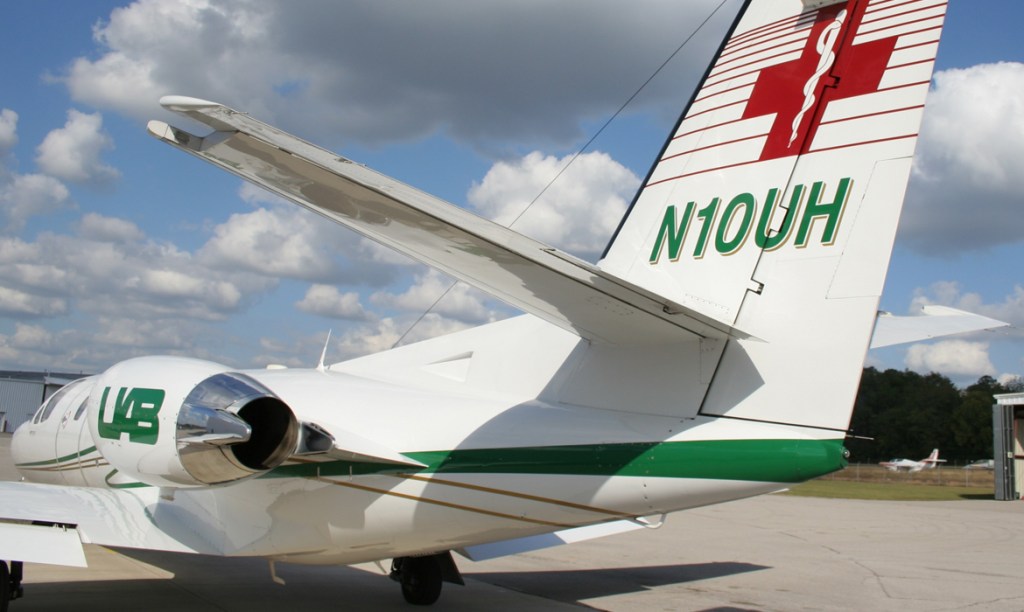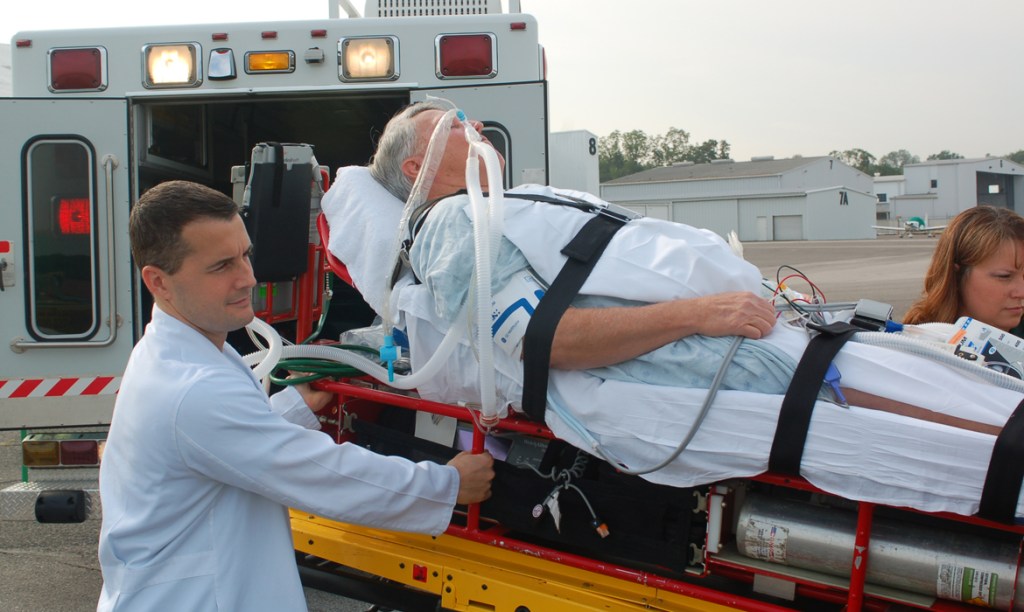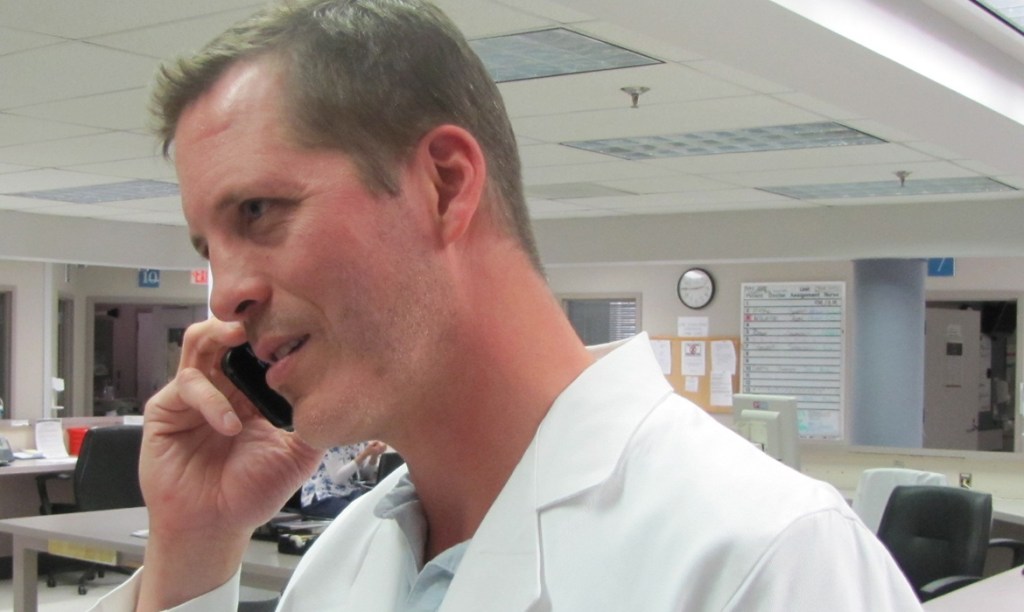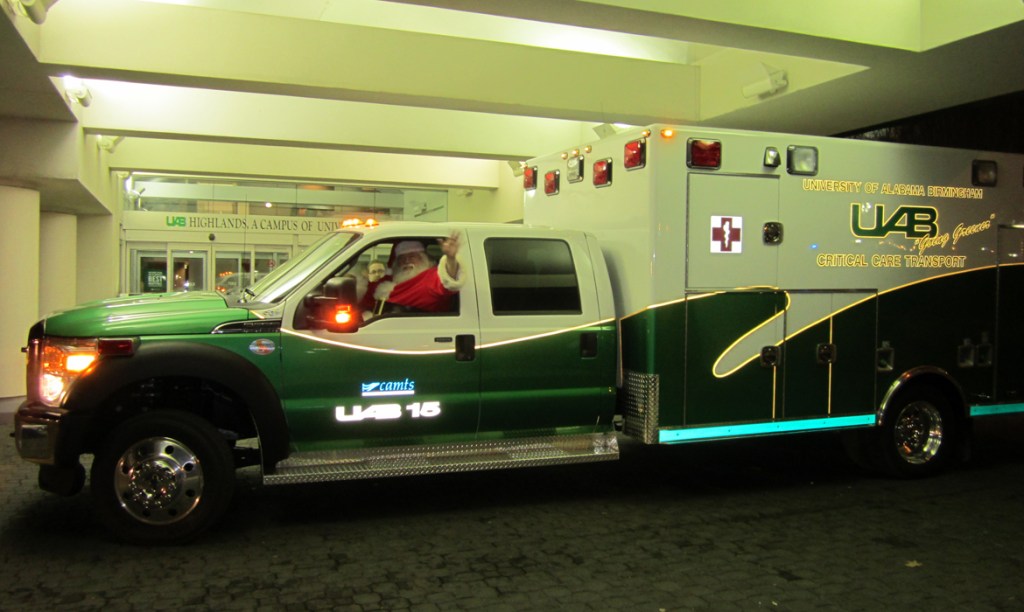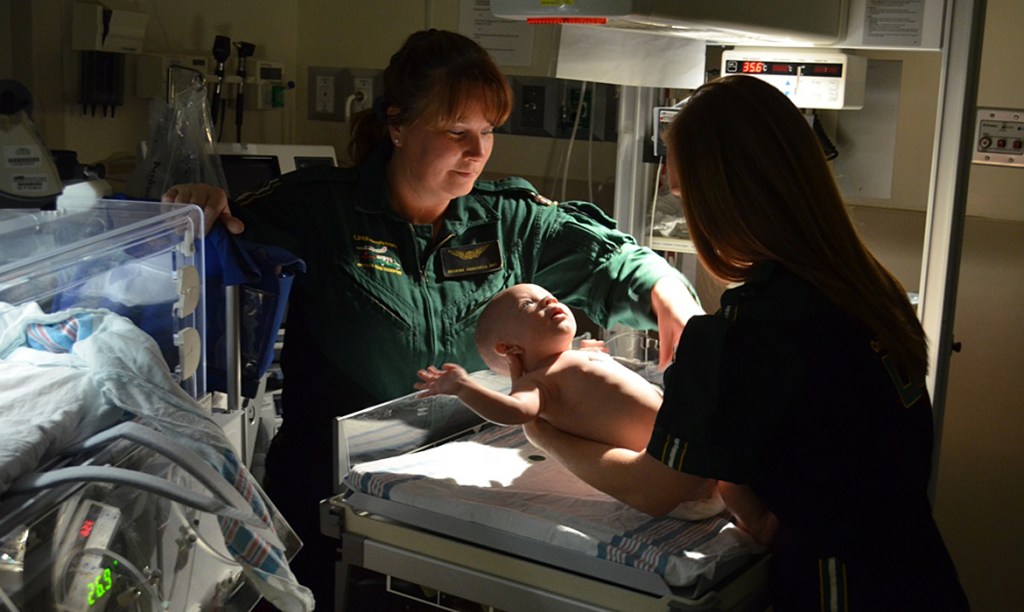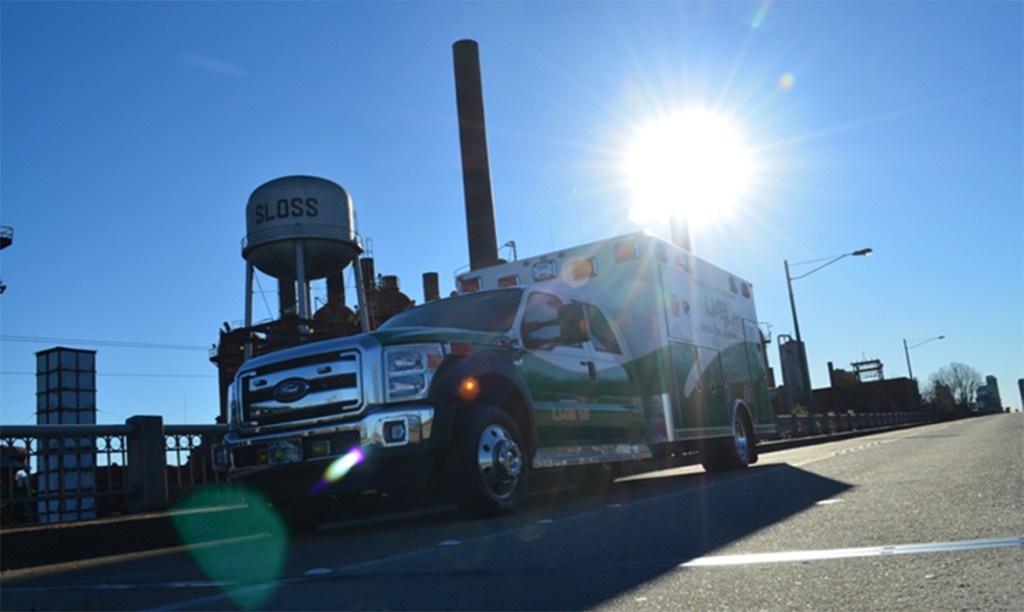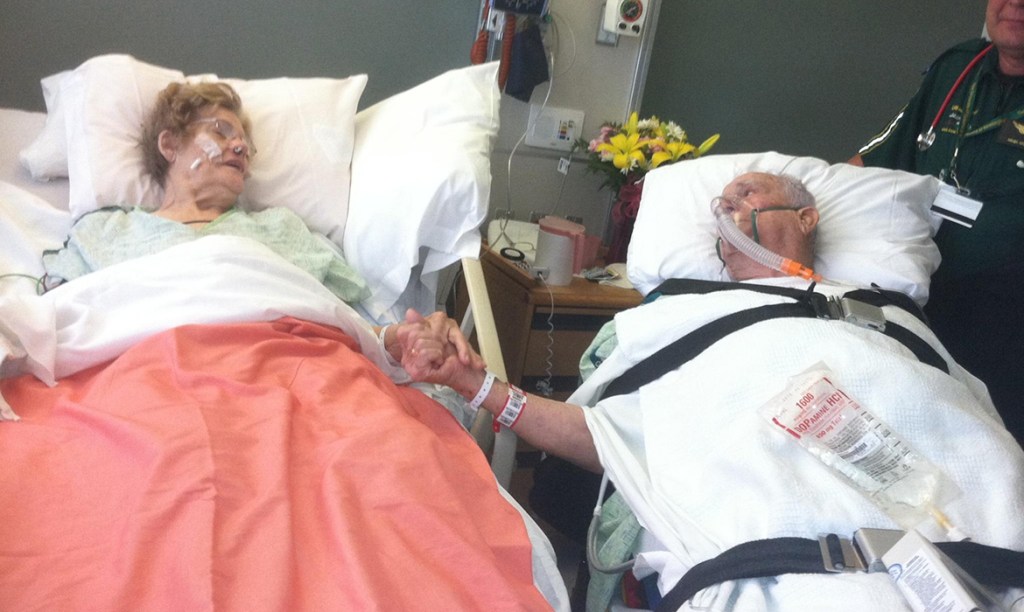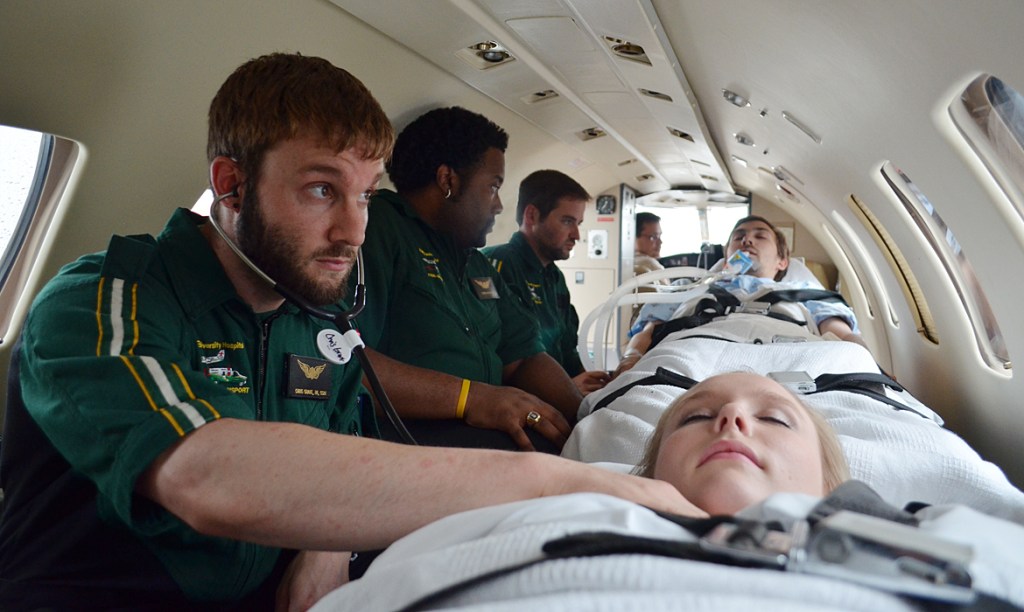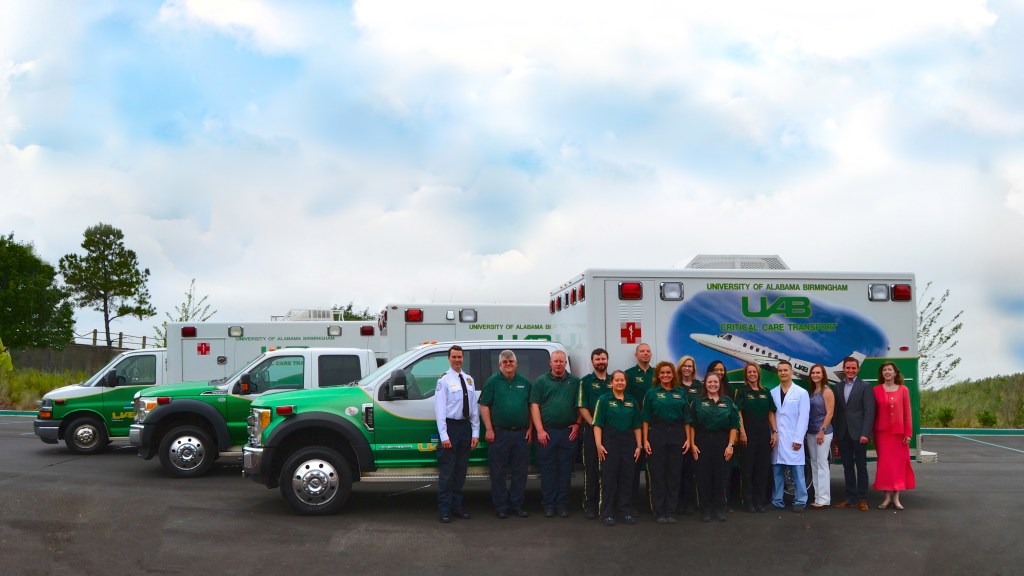Critical Care Transport is a hospital-based, inter-facility transport program for patients in the United States and worldwide who require transport from one medical facility to another. Launched in 1983 in Birmingham, Ala., Critical Care Transport has served more than 60,000 patients to date. Jet aircraft-based intensive care units provide advanced support during long-distance transports. For local transports, Critical Care Transport utilizes three mobile intensive care unit (ICU) vehicles that maintain sophisticated, uninterrupted ICU care. Patients do not have to be going to or from UAB Hospital.
Critical Care Transport is available 24 hours a day, 365 days a year. Complete arrangements for bedside-to-bedside transport – including ground transportation before and after air trips – are made by the Critical Care Transport coordinator. All coordinators are registered nurses.
One twin-engine jet is available at all times for immediate dispatch with the most appropriate transport team based on the patient’s requirements. Other aircraft are available for long-distance or international transports. Three large, ground-based mobile ICU vehicles are used for local transports within approximately 125 miles of Birmingham.
Each adult medical transport team includes an ICU registered nurse (RN) and a registered respiratory therapist, and physicians are available 24/7. Each team member is specially trained in aeromedical physiology. For neonatal patients, a neonatal nurse practitioner or respiratory therapist will be the transport care team.
Critical Care Transport’s onboard medical capabilities include:
- Ventilator management
- BiPAP
- End-tidal CO2 monitoring
- Heliox
- High-flow oxygen
- Nitric oxide (adult and neonatal)
- Neonatal high-frequency ventilation
- Laboratory analysis
- Intra-aortic balloon pump
- Ventricular assist devices including impellas
- Extracorporeal membrane oxygenation (ECMO) management and cannulation
- Intra-cranial pressure monitoring
- Transvenous pacing
- Neonatal active cooling
Critical Care Transport has been accredited by the Commission on Accreditation of Medical Transport Systems (CAMTS) since 1999. CAMTS is an international peer review organization that promotes voluntary compliance with standards that serve its two highest priorities: quality air medical and ground patient care, and safety of the transport environment. CAMTS accreditation is a mark of excellence recognized by federal and state agencies as well as private organizations. CCT has been featured in the last six CAMTS Best Practices publications.
- Did its first transport in March 23, 1983 of quadruplets from UAB Hospital to Brookwood Medical Center.
- Has transported to 46 states and 38 countries
- Had the first civilian aircraft in the country with a liquid oxygen system; the oxygen canisters had serial numbers 1 and 2.
- Has appeared on The Learning Channel, the National Geographic Channel, Discovery Channel, CNN, MSNBC and the film CCT team members starred in, “Johnny Flinton”, won an Oscar in 2003 for Best Short Films.
- Provided the medical team for President Bush’s visit to Birmingham in 2001.
- Has performed up to 77 defibrillations on one transport. And the patient survived!
- Supplied one of the first 10 items writers for the Certified Flight Registered Nurse exam and served on the Exam Construction and Review Committee
- Has two brands of equipment that are still in use that have been used since the beginning of the program: the MVP-10 ventilator and Airborne isolette.
- Evacuated 21 patients during Hurricanes Katrina & Rita and provided staff, supplies, equipment and ambulances for NDMS (National Disaster Management System) twice in 2005
- Transported 8 babies simultaneously in the jet out of New Orleans during Hurricane Gustav in 2008
- Were the only civilian aircraft allowed back in the air on 9/11 returning a patient from Monroe, LA to UAB.
- Has the first Cessna Citation Bravo jet in the world to have a clam-shell type door installed
- Was the first U.S. aircraft to fly a new route over Cuban airspace to evacuate an earthquake victim following the earthquake in Haiti January 2010. This saved 30 critical minutes flight time, and the new medevac flight path was followed by many air ambulances afterward.
- “Ground transportation” on one international trip was a gondola in Venice.
- Supplied the ground content for ASTNA’s Transport Safety Position Paper in 2006 making it the first transport professional association to have all modes addressed in a safety position statement.
- Co-edited, authored and reviewed several chapters in ASTNA’s (Air and Surface Transport Nurses Association) Standards for Critical Care & Specialty Care Ground Transport, 2nd Edition” published in 2010. CCT also did the artwork for the book cover.
- Cited by the CAMTS Board of Directors in 2017 for being “one of the few programs that has achieved full accreditation on a consistent basis with few contingencies and excellent safety culture survey results”
Standing CCT Records:
- First nurse to transport 2,000 patients: John Doriety, RN, CCRN on 1-28-2016 and also 3,000 patients on 12-11-2020.
- Most transports in one day – 23; Transport Coordinator Sheryl Pettis
- Most intra-aortic balloon pump transports in one day: 3 on multiple dates
PUBLICATIONS
Demmons, L., Contributor, “Repatriation”; Kissner, K., Wamack, G., (2023) ASTNA Advanced Trauma for the Transport Professional, 8th Edition, Aurora, CO, p. 253-259.
Demmons, L., “Vehicle Specifications and Fleet Maintenance”, Treadwell, D., Santiago, J., (2019) ASTNA Standards for Critical Care and Specialty Transport, 2nd Edition, Aurora, CO, p. 102-106.
Demmons, L., Minton, R., Taylor, G., “Transporting the Deceased: Partnering with the Organ Recovery Center to Improve Transplant Outcomes”, Air Medical Journal, Nov-December 2018, 37:6, p. 374-379.
Demmons, L., “Infectious and Communicable Diseases”; Clark, D., Treadwell, D., et al (2017), ASTNA Critical Care Transport Core Curriculum, Air and Surface Transport Nurses Association, Aurora, CO, p. 423-434.
Demmons, L., James, S., (2010) ASTNA Standards for Critical Care and Specialty Ground Transport, 2nd Edition, Air and Surface Transport Nurses Association, Centennial, CO, Cottrell Printing Company.
Demmons, L., “Twenty-five Years Later: Critical Care Transport”, Air Medical Journal, Nov – Dec 2008, Vol. 27, No. 6, p. 276-280.
Air and Surface Transport Nurses Association: Demmons, L, Stevens, L, High, K, Lin, J., “Transport Nurse Safety in the Transport Environment, Position Paper”, Sept 2006.
Demmons, L., “Chasing Ambulance Safety”, Air Medical Journal, May-June, 2005.
Gruszecki, A., Kahler, D., Smith, D., Vines, J., Lancaster, L., et al, “Utilization, Reliability and Clinical Impact of Point-of-care Testing during Critical Care Transport: Six Years of Experience”, Clinical Chemistry, Vol. 49, No. 6, 2003.
Commission on Accreditation of Medical Transport Systems Best Practices, Volume II, 2001; Volume III, 2004; most cited program in Volume IV, 2007; Volume V, 2012; Volume VI, 2017, Seventh Edition, 2020.
Randolph, V., Kahler, D., Howard, C., Hortin, G., “Laboratories on the Move: Blood Gas Analysis”, Laboratory Medicine, Vol. 31, No. 1, 2000.
Brunson M., Lancaster L., “Transport of Critically Ill Patients: How to Avoid Pitfalls”, Clinical Pulmonary Review, Vol. 6, No. 4, July 1999.
Demmons, L., Cook,E., “Anxiety in Adult Fixed-Wing Air Transport Patients”, Air Medical Journal, July – September 1997.
Critical Care Transport began in March of 1983 out of a need to provide transportation for critically-ill persons who required transportation to the University of Alabama Hospital and other large medical facilities. The University of Alabama Critical Care Transport service was the first civilian aircraft in the country to use a liquid oxygen system with interchangeable liquid oxygen canisters, serial numbers 1 and 2. The first international trip by CCT was to Canada. The first intra-aortic balloon pump transport was in 1985 and since then we have transported over 700 IABP patients. Since 1983, in the U.S., we have transported to and from 48 states, over 60,000 patients, and traveled over 27 million miles.
Worldwide transport service is available through Critical Care Transport. International transports are equipped and staffed as domestic transports
Some advance notice is required for international transports due to overnight requirements. Due to the length of some of the transports, an overnight stay may be required. All arrangements for the overnight stay, as well as all other components of the trip, will be arranged by the transport service.
Because international transports are usually not covered by insurance, financial arrangements must be secured prior to US departure.
Latest News
View All News-
UAB Lung Health Center to target youth smoking and vaping with annual award from the ADPH
November 18, 2024
-
UAB to conduct NIH-funded research on the health impacts of public housing and neighborhood revitalization
November 12, 2024
-
Reduced sialylation of mucin impairs mucus transport in lungs
September 24, 2024
-
Hope restored: Georgia woman receives heart-double lung transplant thanks to organ donation, family
September 20, 2024
-
COPD and BPD: Inhalation of live Lactobacilli lessens lung inflammation and improves lung function
August 21, 2024



